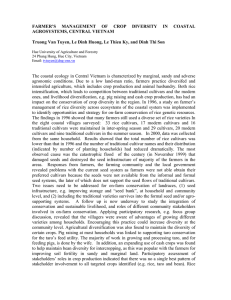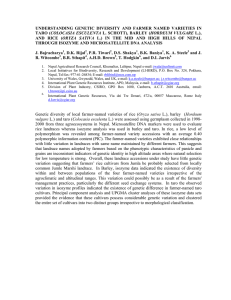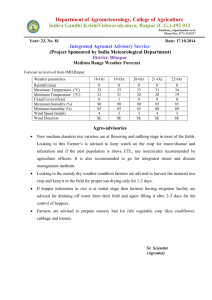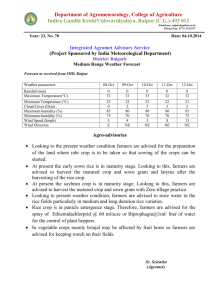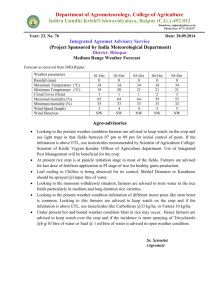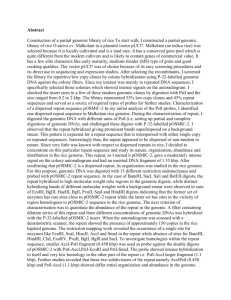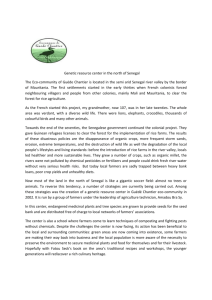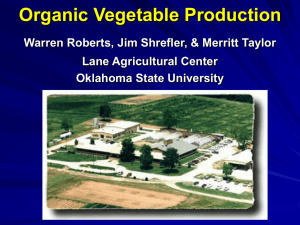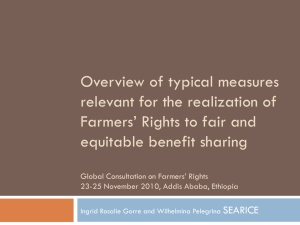TUYEN, Truong Van
advertisement
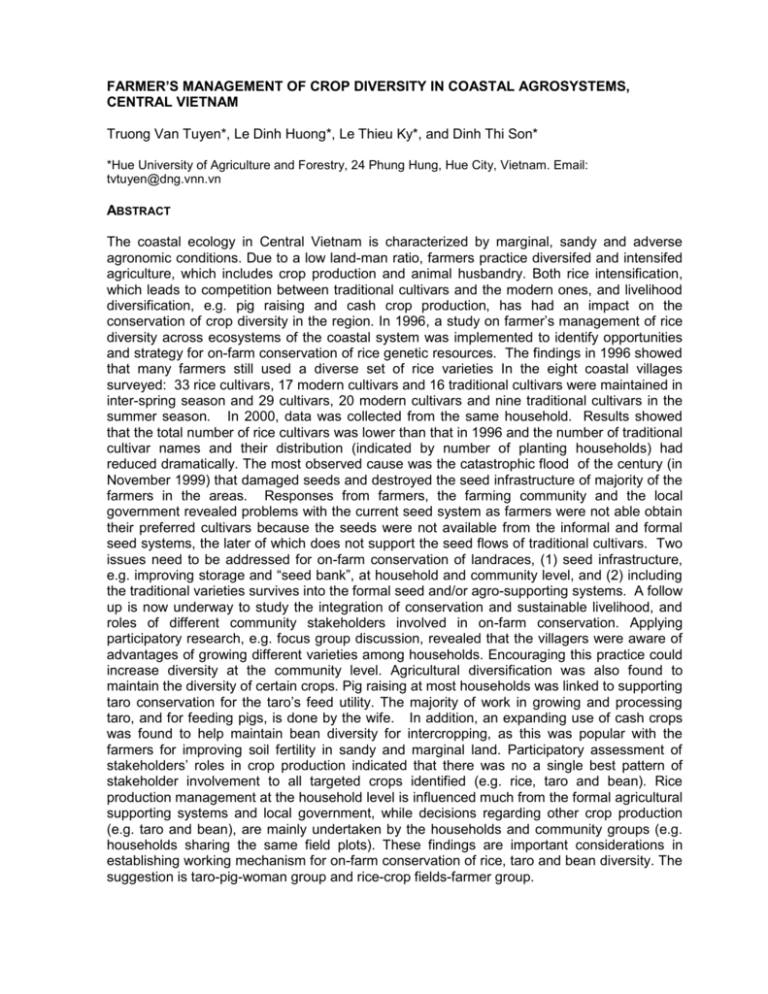
FARMER’S MANAGEMENT OF CROP DIVERSITY IN COASTAL AGROSYSTEMS, CENTRAL VIETNAM Truong Van Tuyen*, Le Dinh Huong*, Le Thieu Ky*, and Dinh Thi Son* *Hue University of Agriculture and Forestry, 24 Phung Hung, Hue City, Vietnam. Email: tvtuyen@dng.vnn.vn ABSTRACT The coastal ecology in Central Vietnam is characterized by marginal, sandy and adverse agronomic conditions. Due to a low land-man ratio, farmers practice diversifed and intensifed agriculture, which includes crop production and animal husbandry. Both rice intensification, which leads to competition between traditional cultivars and the modern ones, and livelihood diversification, e.g. pig raising and cash crop production, has had an impact on the conservation of crop diversity in the region. In 1996, a study on farmer’s management of rice diversity across ecosystems of the coastal system was implemented to identify opportunities and strategy for on-farm conservation of rice genetic resources. The findings in 1996 showed that many farmers still used a diverse set of rice varieties In the eight coastal villages surveyed: 33 rice cultivars, 17 modern cultivars and 16 traditional cultivars were maintained in inter-spring season and 29 cultivars, 20 modern cultivars and nine traditional cultivars in the summer season. In 2000, data was collected from the same household. Results showed that the total number of rice cultivars was lower than that in 1996 and the number of traditional cultivar names and their distribution (indicated by number of planting households) had reduced dramatically. The most observed cause was the catastrophic flood of the century (in November 1999) that damaged seeds and destroyed the seed infrastructure of majority of the farmers in the areas. Responses from farmers, the farming community and the local government revealed problems with the current seed system as farmers were not able obtain their preferred cultivars because the seeds were not available from the informal and formal seed systems, the later of which does not support the seed flows of traditional cultivars. Two issues need to be addressed for on-farm conservation of landraces, (1) seed infrastructure, e.g. improving storage and “seed bank”, at household and community level, and (2) including the traditional varieties survives into the formal seed and/or agro-supporting systems. A follow up is now underway to study the integration of conservation and sustainable livelihood, and roles of different community stakeholders involved in on-farm conservation. Applying participatory research, e.g. focus group discussion, revealed that the villagers were aware of advantages of growing different varieties among households. Encouraging this practice could increase diversity at the community level. Agricultural diversification was also found to maintain the diversity of certain crops. Pig raising at most households was linked to supporting taro conservation for the taro’s feed utility. The majority of work in growing and processing taro, and for feeding pigs, is done by the wife. In addition, an expanding use of cash crops was found to help maintain bean diversity for intercropping, as this was popular with the farmers for improving soil fertility in sandy and marginal land. Participatory assessment of stakeholders’ roles in crop production indicated that there was no a single best pattern of stakeholder involvement to all targeted crops identified (e.g. rice, taro and bean). Rice production management at the household level is influenced much from the formal agricultural supporting systems and local government, while decisions regarding other crop production (e.g. taro and bean), are mainly undertaken by the households and community groups (e.g. households sharing the same field plots). These findings are important considerations in establishing working mechanism for on-farm conservation of rice, taro and bean diversity. The suggestion is taro-pig-woman group and rice-crop fields-farmer group.
